Photo Tips
How to be a Happy Wildlife Photographer
30/09/13 10:45
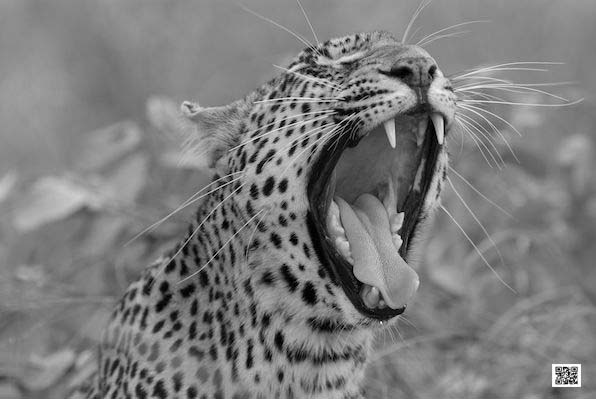
What does one need to be a happy wildlife photographer? The Big Five all photographed within one day on safari or the perfect light with the perfect Big Cat sighting or the front row position with your game drive vehicle to see the Great Migration? These are all perfect conditions to be a happy wildlife photographer, but they do not make happy.
A happy wildlife photographer is happy inside him/herself. Unrealistic expectations can make that one is very unhappy with anything. Expecting nothing and being prepared for everything is a great starting point to end up with the most amazing pictures of anything. And don’t expect from yourself to photograph like somebody else, just be yourself and photograph the way you do. It only counts that you love you pictures and that will make you a happy wildlife photographer.
Happy wildlife snapping!
Ute Sonnenberg for www.rohoyachui.com
Wildlife Photo Tip: The Eye in Focus
29/09/13 09:06

Wildlife photography is a lot about patience and waiting for the moment that something happens. Safaris with wildlife interactions are the best for photography, but when the action eventually comes it can also be a challenge.
Action in wildlife photography means that all happens very fast. The animal moves very fast and the light is changing very fast to, when e.g. a leopard is moving around in a tree, going in and out of the shade very quickly. That means the pictures tend to be blur.
There is nothing wrong with a blurry picture. It supports the movement and looks very interesting, but when all is blur it is not nice anymore. Our eye needs to focus on something and an entirely blur picture doesn’t allow that. We feel uncomfortable and don’t like the picture.
Make sure at least one eye is in focus. We connect usually with the eye of a photographic subject and if that is out of focus, it feels like it hurts our eye. Is the eye in focus, the rest can be blur and full of motion. It will be a lovely and most likely very interesting picture.
Happy motion snapping!
Ute Sonnenberg for www.rohoyachui.com
Get this useful design tool for your photo creations
27/09/13 14:16
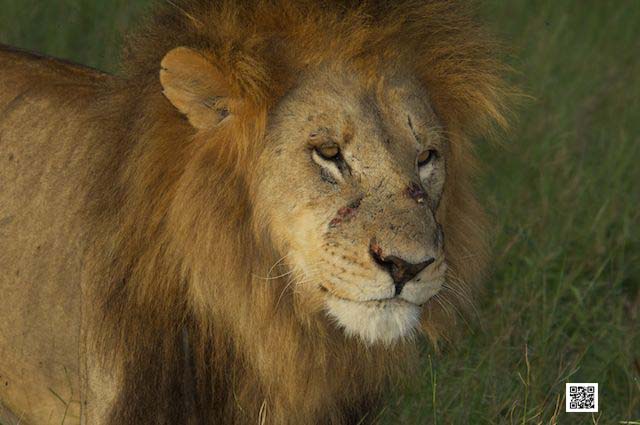
The hobby photography or wildlife photography does not end with taking the pictures. Once back from photographic safari, a holiday on the beach or from a friend’s wedding, the post-production starts. We make photo books, calendars, cards, posters, fine art prints and many more creations where we use our photographs.
There are templates that help us with it, yet even with templates sometimes we struggle to find the right picture for a page in a book or a collage or some other occasion we want to create something with a picture. Often the problem is in the not matching colors of the picture with the background color or the color of illustrations or even the color of the text. Matching the colors can be a nerve-racking process, but it doesn’t have to be like that.
There is this lovely tool http://www.pictaculous.com/. This online tool helps you to find matching colors easily. Just upload the image and the tool does the rest. Try it. Its really easy.
Happy photo creating!
Ute Sonnenberg for www.rohoyachui.com
How good are your wildlife photos really?
25/09/13 09:07

Maybe you have been on a photographic safari in Africa, you get home and your photos sorted and after hours behind the computer and a couple of hundreds of images further you start doubting your own photographer talent and skills. But should you?
Do you compare your wildlife photography with what you see on National Geographic or in the magazines? If you do so, be conscious that all these images are photoshopped and you can achieve similar results by photoshopping your images to.
But lets look at the essence. Do you love your images? Do they appeal to you? If you answer both questions with a yes, your images are great, because they are the images you love. They capture special moments of your safari, intimate moments with wildlife and nature and they will take you back to your adventure whenever you want to experience it again. Love your images; they are your memories.
Happy wildlife photography snapping!
Ute Sonnenberg for www.rohoyachui.com
4 Calls to Action for Your Wildlife Photography
23/09/13 16:33

Call to action is a term from marketing, but it can be useful for photography as well, as it is often tempting to postpone the stroll in nature until tomorrow and tomorrow and ….
Go now. There is no budget needed to go into the garden, to the park or on a stroll in the woods. It is refreshing, calming and recharging and practicing is always good for your wildlife photography. If you consider to go on photographic safari, the go now can also be an inform now with some search time on the Internet or in the bookstore. Whatever it is, your wildlife photography will benefit.
Buy now. This can be a tricky one, but can be a last push to get that zoom lens you need to properly photograph birds or the far away lion.
Share this. That is a lovely one for photography. Sharing your photographs, experiences and knowledge helps others and yourself. You always learn a lot yourself when teaching others.
Start your free trial. This means usually that one has to pay from a certain moment, but not with wildlife photography. Wildlife photography is always for free as nature is for free and wildlife is everywhere. If you haven’t started wildlife photography yet, try it and have fun.
Ready to go?
Happy wildlife snapping!
Ute Sonnenberg for www.rohoyachui.com
Why Share and Collaborate [in Under 100 Words]
22/09/13 15:18

We do not exist isolated; we are connected to the world around us. We can try to do all ourselves, but it will not bring us far.
By sharing and collaborating we grow and let grow, we learn and teach at the same time.
No matter what and where, with our team colleagues at the office, our family, our travel companions on photo safari, the other students on wildlife photography course, the people on the plane and the people at the other end of the world we are communicating with online, we constantly share and collaborate in order to make things work.
Sharing and collaborating also make you a better photographer. Use it.
Happy teaching and learning!
Ute Sonnenberg for www.rohoyachui.com
How to get innovative ideas for Photography
21/09/13 08:48
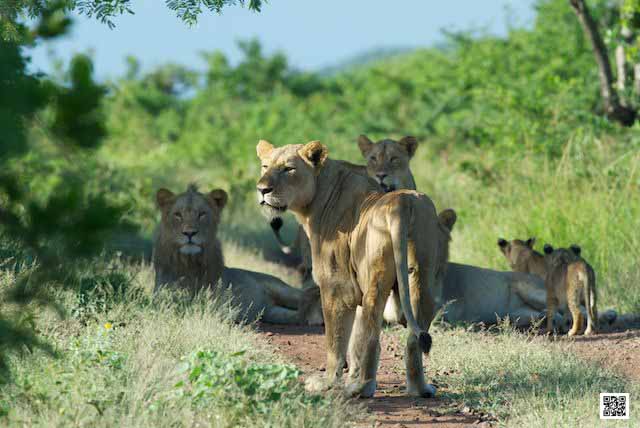
Photography needs constant inspiration and ideas to grow and explore new fields. One source of inspiration are great photographers like Peter Beard and Helmut Newton, the one especially for wildlife photography and the other for fashion. Yet both give great ideas for all kinds of photography, showing techniques and compositions.
Movies and entertainment are also a great source of inspiration. How do they do the lighting and what colors are they using? This can reflect in your own photography and give it a complete new turn.
Nature itself is a fabulous source of inspiration and ideas. Only look at birds with their diversity of stunning colors and patterns. And for photographic safari lovers the BBC nature series are amazing with their great shots of fantastic wildlife interaction.
But ideas can come from anywhere, from as divers as children playing, innovative adverts, natures seasons and office buildings. Think out of the box and discover photographic potential in anything.
Happy innovative snapping!
Ute Sonnenberg for www.rohoyachui.com
Is Photography Your Best Friend?
20/09/13 15:30
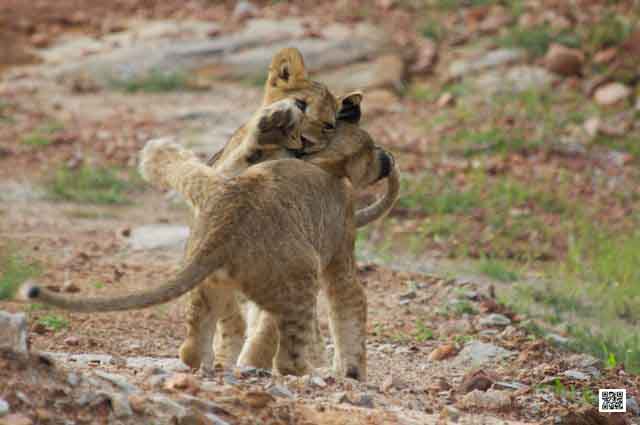
What is a best friend? Your best friend is always there when you need him/her, listens, comforts you, inspires you, enjoys fun with you, travels with you, rests with you, enjoys nature with you and loves wildlife with you.
And isn’t photography all that? Are you your photography’s best friend to? Maybe it would be an idea to take every now and then a picture just for your photography, to say thank you as a best friend. Your camera might appreciate that to.
Happy photography loving snapping!
Ute Sonnenberg for www.rohoyachui.com
Why you need more than 1 camera
14/09/13 12:32

Wildlife photography takes us home to nature, lets us feel the outdoors and capture its beauty. There is probably no other photography that is in the same way exciting and calming as wildlife photography. Photographing the Big 5 on safari is very exciting, impressing and stimulating and at the same time sitting with a leopard for a morning is very calming and makes us connect with nature again in a quiet way.
It is never boring. A day in the bush is never the same. The animals have always surprises for the observer and photographer. They make us see and grow in photography with every minute we spent with them and they rarely do what we think we want them to do, which is very refreshing too.
Get your dose wildlife photography every day. Wildlife is everywhere, in your garden, in the park and even in the city. Just start seeing them and capture their magic.
Happy wildlife snapping!
Ute Sonnenberg for www.rohoyachui.com
How to Master Hazy Light
11/09/13 06:19

There is a reason that game drives on photographic safaris are in the early morning and late afternoon. One reason are the animals. They are more active in the morning and afternoon when it is not that hot and the chance of seeing wildlife interaction is bigger.
Another reason is the light. The so-called golden hour with the best light for wildlife photography is in the morning just after sunrise and in the evening just before sunset. In between, the light is challenging. Already from about 9 am the light becomes too bright and hazy with no contrasts and too much reflection on the animals and landscape. One doesn’t need to take a photo to see it, it just looks like that for most of the day.
The normal exposure settings you use and can use during the golden hour cannot master this challenging light. You got to adjust. One option is adjusting the aperture. Just go 1 or 2 f-stops higher to get more saturated colors, but be careful not to overdo it. Another option is to work with exposure compensation, especially when photographing animal close-ups and their faces are too bright with no texture. This works also well with elephant and rhino. Their grey skin reflects a lot and on the picture it looks very shiny.
Unfortunately there is no way in practicing that before going on safari. There is no other place with this light and you will agree, once arrived for example in the Masai Mara.
Maybe one more advice. Don’t expect that what you usually do with your photography will work in the bush. Be prepared that all will be different. This will help already to avoid frustration.
Happy wildlife snapping!
Ute Sonnenberg for www.rohoyachui.com
What is a Photography Break?
08/09/13 17:52

What if you need a Sunday urgently, but its only Wednesday and you feel already exhausted. Take out your camera or cell phone camera and start photographing whatever you see around you. You don’t even need to leave the desk, but of course it would be nicer to just step outside and photograph what’s going on in the streets, in the park or just in the building you work in. Open your eyes, look out for the light and start seeing all the inspiration surrounding you. Maybe your photography break lasts only 15 minutes, but it will refresh you and recharge you with new energy and strength to make until Sunday.
Of course there are also the very much-needed holidays, the longer breaks to recharge and relax. Turn them into wildlife photography breaks, photographic safari breaks, street photography breaks, sport photography breaks or relaxed beach sunset photography breaks. Add photography to make sure you get most out of it.
Happy Sunday snapping!
Ute Sonnenberg for www.rohoyachui.com
What are the Components of Your Photography?
05/09/13 12:57
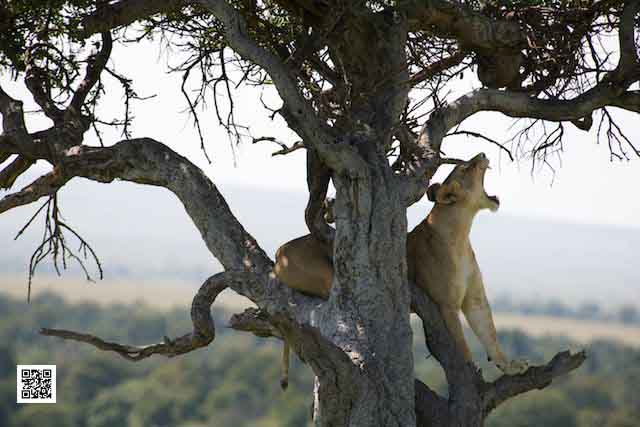
Take one of your pictures and look at it. Ask yourself the question, what made the picture.
There is the camera that captured the photo. Maybe it was a smart phone camera or a camera body with a lens or a small point and shoot camera. And there is the subject of your photo, your family, friends, a landscape, animals, wildlife, people on a street or a lovely beach. All these components are easy to identify. You can see them and touch them.
Yet there is more. The main component is you. Not only that you operate the camera, it is you who sees the composition, decides on the subject, creates compositions, connects with the light, senses an opportunity, creates opportunities and eventually captures moments that last forever.
Where you conscious about your role as main component of your photography?
Lets take it even further with an example of wildlife photography. You are on photographic safari, it is hot, the sun is burning on your head, you are following a leopard through Kruger Park, the game vehicle is going off road, you got to duck from branches, flies are circling your head and then you see the leopard, you got to focus, choose the right settings, the right angle, just the moment that the light is on it’s face and then press the shutter at the right moment.
It all depends on you and your ability to cope with any circumstances and to stay focused on what you do. Be nice for yourself, even nicer than you are for you camera equipment. You are the main component of your photography.
Happy snapping!
Ute Sonnenberg for www.rohoyachui.com
Why Ideas Matter
27/08/13 12:30

How often do we sit over a blank sheet of paper, pen ready to write and hoping for ideas to flow? It can be the shopping list for the coming weekend, the packing list for a holiday, the paper for school, the motivation for a job application or the preparation for a meeting. The idea is what we are waiting for to make whatever we want to do a success.
And the process of finding ideas seems to be the same for all purposes. What do we do when the idea doesn’t want to come? We google recipes, travel destinations, photographers, leave through magazines and books until we have enough inspiration for ideas to start flowing. Without ideas, our life would be always the same and pretty boring.
Take wildlife photography as an example. Either you are someone who has been on safari many times or someone who is going for the first time, you want to have ideas about what to photograph and how. The idea can be to sit on the game vehicle and wait what comes or discuss with the guide to look for the Big 5 with the aim of photographing a portrait of a lion, rhino, elephant, leopard and lion within one day … or two or three. You will have somehow an idea what you want and how the pictures are going to like. If the animals are not cooperating, be open for a plan B and have ideas about flowers and beetles.
Got it? What are your ideas for this week’s photography? What do pictures do you want form this week?
Happy snapping!
Ute Sonnenberg for www.rohoyachui.com
Revolutionize your Photography - Create your Mantra
26/08/13 09:57

What do you think about your photography? What is the spirit of your photography? Are you happy with your photography?
Mantras, from the Sanskrit, a word or group of words, capable of creating transformation, are used by individuals for every day questions, by corporates for transformations towards success and of course can be also used to revolutionize your photography.
Ask yourself what you want your photography to be and identify what you need to achieve that. If you want to be a great wildlife photographer, identify what you need to become one and what in your eyes is great wildlife photography. Don’t try to be someone else. Be you and work with your strengths.
So for example your mantra could be: Photograph on the safari destinations with the best golden light, always go for the best game drive quality and have at all times an open mind for what the bush has to offer you.
If you are overwhelmed by the variety of prospects for your photography, your mantra could be: I stay focused on what my strength is and on what I love to photograph the most.
Only by staying focused on what you really want and on what you are good at, your photography can show incredible changes and transformations.
The same applies when mantras are used for teams or in team incentives. Maybe you are working in a company with mission and vision mantras (also called statements) for each team and department. You can use this experience to create mantras for your photography and transform it into what you wish it to be.
Inspired? Create your own mantra and watch what happens.
Happy snapping!
Ute Sonnenberg for www.rohoyachui.com
How to use the camera shoulder strap
09/08/13 20:11

You might have never given it a thought, your shoulder strap of the camera, but it might be good to do so.
The essential idea of the shoulder strap is to secure your camera and to keep your hands free, especially when you are hiking or doing some other activity. But mostly the shoulder strap is not used for the shoulder. The strap is around the neck and this can affect your photography.
When something is hanging on the neck, the neck tends to get tensed and stiff and that makes us feeling uncomfortable, which reflects in the photography. When you feel it is not secure enough to have the camera strap on the shoulder, use it diagonal. The camera will be secure and your hands will be free to.
This will be very useful when dropping the camera would mean total loss, like when being at great heights or on boats. Also for bush walks and similar activities on safaris in South Africa and elsewhere, having the camera secured like that helps a lot. You like to have your hands free when doing bush walks on uneven territory, just in case you stumble and want to hold on to something.
When travelling in groups or joining other group events like team building incentives, one can get the idea that all is safe and safe guarding is dropped. But that is exactly the moment thieves are waiting for. Keep your camera always secure. Losing it can be such a hassle and you will not get the images back.
On wildlife photography courses guests learn how to use the shoulder strap efficiently and practically. And it is always and “ah” moment when they realize that it was actually very uncomfortable to have the camera hanging around the neck. Try it.
Happy snapping!
Ute Sonnenberg for www.rohoyachui.com
Will there be a Canon 75MP camera?
30/07/13 19:46

Last year we had the announcements that Canon comes with a 45 MP camera and nothing happened, now are the rumors that Canon is working on a 75 MP sensor. Will this really happen? The details so far are that the sensor is built of layers in order to generate the 75 MP. But there is nothing more at the moment.
And again the same questions arises, do we need that? What are we going to use 75 MP for? Already the 45 MP were just too much for everyday shooting and photographic safaris. What kind of memory card is going to be able to deal with the data? Will students in wildlife photography courses and delegates in team building photo safaris compete with each other through the megapixel strength of their cameras? Will there be a renewal of the class system determined by the megapixels of your camera?
Maybe these are again only rumors, but who knows, maybe this is in 10 years the standard of smart phone cameras.
Happy snapping!
Ute Sonnenberg for www.rohoyachui.com
Practice with M
26/07/13 10:01

Do you shoot always on M, the manual settings on your camera, or mostly with programmed or auto? Even if you are not experienced enough to photograph on manual, you should take some time to practice with this setting, just to get more confident in what you are doing. Nothing can go wrong and you will learn how the camera works with light. You will get a better understanding of the “language” the camera is talking to you through the images.
Sounds to complicated? Don’t think you should start practicing with manual when being on your first photographic safari or team building photographic safari and you are lucky to see a leopard. Then go on your safe mode to get the image. But there are plenty of opportunities to practice, also on safari. For example during the wildlife photography courses we take the time when waiting at a sighting where currently nothing is happening to play with the settings and light or during a picnic. People are often afraid of trying manual and very surprised that it isn’t as difficult as they thought. And at the end they start liking it too, using what manual teaches them to quickly adjust settings in other modes when fast moving objects like a leopard moving in a tree mean fast changing light too.
Try it. It is more fun than you might think and you will learn a great deal.
Happy snapping!
Ute Sonnenberg for www.rohoyachui.com
How to Approach Animals for Photos
25/07/13 07:55

Animal lovers are happy to see a cute dog, a horse in the field or a cat in the window and most likely walk over to the animal to pet it. Some animals run off, others accept it and others love it. Photographing an animal follows pretty much the same pattern as wanting to pet an animal. The photographer with the camera enters their comfort zone and wants something from the animal, a good photo. That happens often pretty rough, although the photographer is not conscious about that. Just a quick photo and further he/she goes. But the animals are often not happy with that intrusion, look away or walk away.
The same happens on game drives on photographic safaris, team building photo safaris and wildlife photography courses. For example one day a game vehicle drove past a hyena, lying in a little puddle, enjoying the cooling water. The hyena was looking towards the road when the vehicle came, but the moment the vehicle stopped and the cameras popped out it turned away, looking in the opposite direction, very much frustrating the photographers on the vehicle. Now they started calling the hyena, trying to make her turning towards the camera, but the animal wouldn’t do that. The more the people pushed the more they drove the animal away from them. Never push an animal, it will not do what you want and if it gets too much, it will just walk off.
If you want to photograph animals and get great photos, take time and be with them. In the case of the game vehicle, just stand there and wait, make yourself comfortable and get the rush out of yourself to. After a while the animal will get used to you and feel comfortable doing its own thing. This is the moment when you get the best images. They will be images of a relaxed animal doing animal things and maybe you can even witness great animal interactions. Just don’t push them.
The same applies actually also to people. Try to push children to pose like you want and the crying will start.
Happy snapping!
Ute Sonnenberg for www.rohoyachui.com
About Patience
23/07/13 10:51
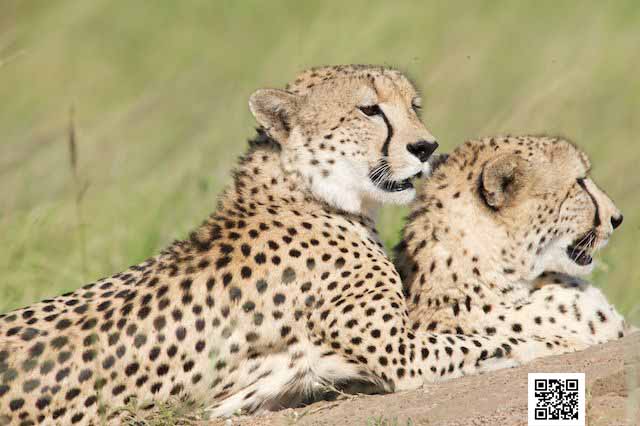
Patience is a reoccurring topic in photography; maybe because it is more difficult than learning all about aperture, shutter speed and ISO. It is probably the “empty” time we experience while waiting for the right thing to happen or just can’t get this memory card quickly enough back in its port, at least we think it has to happen quickly. And that is the next question, what is quick, half a second or 2 seconds or what?
It is a wonderful learning experience when being on photographic safaris, wildlife photography courses and team building photo safaris right in the middle of the bush, with native people living there who look at you in astonishment when you get furious over a resisting memory card. They are used to live in the moment, they walk over the Great Plains a whole day to their “shopping mall” and with the same inner peace they look into the eyes of a lion, when defending their cattle. They might not know the feeling of “empty” time, because there isn’t something like that when living in the moment. There is only one moment at the time.
When being out in the bush one learns that just by being there, but not everybody can pack up and move to the bush. Yoga and meditation are good alternatives to learn about time and patience, beneficial not only in photography, but in all ways of life.
Think about it and maybe even the stubborn memory card will give up and just do what you want it to do.
Happy snapping!
Ute Sonnenberg for www.rohoyachui.com
Try Aerial Photography
22/07/13 10:03

Have you ever thought of trying aerial photography, but dismissed the idea, because you thought that is going to be complicated and too expensive? It can be expensive when booking a plane or helicopter or balloon to exclusively do aerial photography, but there is an alternative. Just find a high tower or building and use the elevated view to take great aerial shots. Ever thought of just going onto the first floor of your house to photograph flowerbeds in your garden?
That works all well when there are houses and towers around, but when being on photographic safaris, wildlife photography courses or team building photo safaris it is not really an option. A high tree will not do enough elevation in the Masai Mara or Kruger Park or Serengeti. But they got plenty of hot-air balloon companies to go on a really nice ride over the Great Plains. There are also private small planes that offer half an hour flights over the Masai Mara, which gives more flexibility than a balloon, although the balloon is quieter and not so bumpy as a plane can be. Almost a must is a balloon flight in the Namib Desert in Namibia. You will never have these fantastic sights from the ground.
However, thinking aerial is the first step to open new views and angles to your photography. We often just don’t think of the bird view perspective, although it’s available just at our doorstep.
Happy snapping!
Ute Sonnenberg for www.rohoyachui.com
The Creative Block
18/07/13 13:10

Not only writers have a creative block, also photographers can experience that, even on the most amazing photographic safari, wildlife photography course or team building photographic safari. It can just happen.
How do you know on a safari that you have a creative block? When you get grumpy, impatient, unsatisfied, complaining and restless on the safari vehicle. It is, because you think there is nothing interesting to see and photograph. You feel disappointed, because the bush is not showing you something interesting. But it only means that you have a block. For some reason you don’t see, for some reason you are not able to identify interesting things all around you.
When you realize you have a block, its already almost over, because you identified the problem. Now solve it. Take a break, do something completely different, like lying on the lodge pool and read a book or just have a nap. Let go and the block will go too.
Sounds familiar? Happy snapping!
Ute Sonnenberg for www.rohoyachui.com
How to Photograph Rhinos
17/07/13 11:49

It is truly amazing to see rhinos in the wild on photographic safaris, wildlife photography courses and team building photographic safaris in South Africa, Kenya, Tanzania and Namibia. All these countries offer great sighting and especially Namibia has also the desert adapted black rhinos.
These beautiful animals are not easy to photograph. Because they are big, bulky and equipped with a greyish skin they can end up as rock like things on photographs easily. Especially in low contrast light it is hard to get a good photo.
With regards to composition, keep in mind to photograph them from an angle, just like you would do with a horse. With regards to the light, experiment with the aperture, a f-stop higher than usual might be helpful. It can also look great to photograph them backlight, although only to a certain extent.
Photographing them is challenging, yet amazing when you get the photo right.
Happy experimenting!
Ute Sonnenberg for www.rohoyachui.com
How to Photograph Maasai People
16/07/13 14:33

The Maasai people in Kenya and Tanzania are very beautiful and proud people. They live in the Serengeti and the Masai Mara and one can easily see them herding they cattle when being on a photographic safari, wildlife photography course or team building photographic safari. They make fantastic photographic “subjects” with their colorful traditional clothes, decorated with beautiful beadwork. But one should know that they want to be asked before you photograph them, otherwise it can get a bit nasty. And because they are quick learners, they adjusted to tourism and will ask for some money for being photographed. Usually the amount can be negotiated and they will be really patient with the photographer and helpful to get great shots. It is only a pity that the photographs will be posed and not spontaneous snap shots. However, they are impressive people and fabulous for photographers.
Happy travel snapping!
Ute Sonnenberg for www.rohoyachui.com
What to Photograph This Summer
12/07/13 14:31
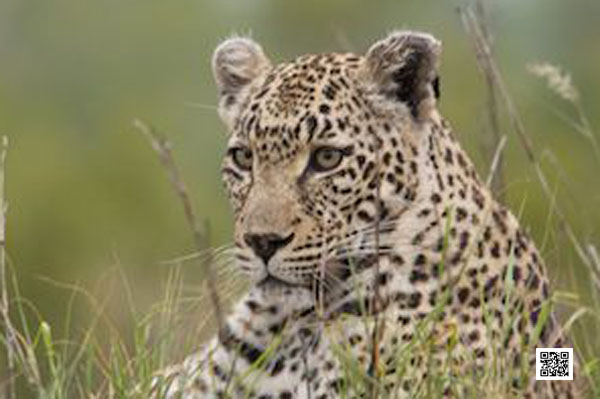
In the northern hemisphere summer is in full swing and in the southern hemisphere winter is very mild with the promise of great wildlife sightings. But there are not only on photographic safaris in South Africa, wildlife photography courses in Kenya and team building photographic safaris in Namibia great wildlife sightings and nature adventures, also the beautiful nature of the northern hemisphere has to offer great beauty to the photographer. The green of the forests with their beautiful light and shade compositions are wonderful photography subjects and so are the parks. The animals from your own pet to the deer and foxes of the woods are beautiful in this awesome light of summer.
And don’t forget the cities and villages you can visit with their summer flair and flowerbeds.
Actually anything is great in summer and the camera can just click away, capturing this lovely feeling of being outdoors and enjoying a warm summer day.
Enjoy yourself! Keep snapping!
Ute Sonnenberg for www.rohoyachui.com
Learn from Edvard Munch
08/07/13 11:20

We probably all know Edvard Munch’s very famous painting “The Scream”. It shows his distinguished style, which makes it easily recognizable as his work. Earlier work shows that he tried different techniques. Some paintings look a lot like Monet or Van Gogh paintings, because he uses “their” style.

But then he goes beyond the styles of “others” and arrives at his own style of painting. The little dots that form the paintings of Monet become long dynamic lines in Munch’s paintings.

But what got that to do with your photography, with photographic safaris to South Africa, wildlife photography courses in Kenya and team building photographic safaris in Namibia? It tells something essential you always should keep in mind with any of the mentioned activities, find your own style, and have your own signature in photography.
When a safari vehicle with 6 people on it stands at a lion sighting with a lion lying in the grass not doing anything. One could be tempted to think that all photographs of all guests would be the same. If all guests on the vehicle have in mind the same image of a lion they saw in a magazine and photograph to match that image, their photos would pretty much look all the same. But if each of them looks at the lion in his/her own way, each photo will be different and one could easily say who photographed which image.
Find your own signature and you will find your place in photography.
Happy snapping!
Ute Sonnenberg for www.rohoyachui.com
Exhibit Your Photographs Online
05/07/13 10:34

As an emerging talent in photography it is not easy to find galleries exhibiting your work and with the numbers of photographers trying to get their attention, you better try it independently online.
There are great platforms like Behance and Foundfolios where you can show your art projects and Flipboard and Flowboard to present your work in a beautiful way. And don’t forget the opportunity to create ibooks and even sell them in the itunes store. All tools are available online and give you the chance to make your way into the galleries. Use them.
And for the wildlife photography lovers and photographic safari, wildlife photography course and team building photographic safari travelers are the lodges gearing up to make sure you can share your collections straight away from the bush. No gallery can beat that.
Show your work and keep creating.
Happy snapping!
Ute Sonnenberg for www.rohoyachui.com
How to Win from Yourself
14/06/13 16:59
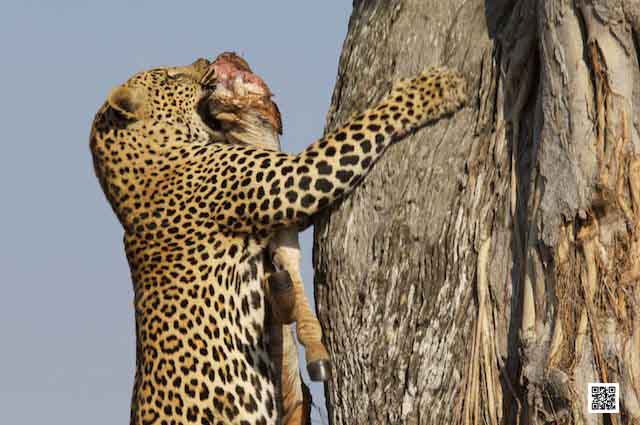
Sometimes we got this inner voice saying, lets do it next time, lets wait or not now. This voice pops up in several situations and also in photography. A standard situation for it to start talking is on game drives during photographic safaris, wildlife photography courses and team building photographic safaris.
Sitting on a game vehicle can feel like sitting on a rocking chair, not only for the rocking, but more for the feeling of dreaming away and getting to lazy to do something, even to take a photo. Everyone who had been on a game drive will know the situation that there was a wonderful photo and one was too “lazy” to make the driver stop to photograph it. It’s like being caught in a trance, with the result that the photo is gone. The photo opportunity will not come again.
The only way of doing something to get the photo is to be conscious about it and to practice. Just shout out loud when you see the photo and don’t think about what others might think. You saw it and it’s your photo. Take it.
It is actually the same when driving in a car on a motorway, with the only difference that it is often not possible to stop to take the picture. So, do it when you have the chance and definitely on safari.
Happy snapping!
Ute Sonnenberg for www.rohoyachui.com
Photographing Desert
13/06/13 16:58
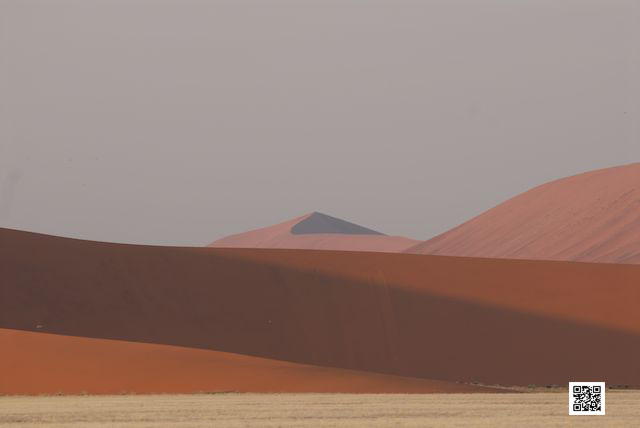
Photographing the desert is the ultimate challenge to see where one can easily think there is nothing to see. Photographic safaris, wildlife photography courses and team building photographic safaris to these places are not surprisingly the most challenging and at the same time more exciting ones.
First of all get up early. Not only the light is the best, but also the temperature is still all right. During mid-day you only want to be at the pool or sit still in the shade or well, have a nap.
Bring a macro lens, if you have. The desert offer the opportunity to photograph interesting small animals, grass, flowers, stones and as in Namibia ancient rock drawings.
Use the dramatic dimensions of the desert to put animals like a gemsbok in perspective, walking into the depth of the image.
Do, if possible a hot air balloon ride. This will offer you beautiful views on the incredible landscape of the desert. Be careful when using a wide angle lens for your landscape photography, that the distortion works out nicely.
And last but not least keep looking, although you might think there is nothing. Photographing in the desert is the art of seeing.
Happy desert snapping!
Ute Sonnenberg for www.rohoyachui.com
High Res. Images for Social Media?
29/05/13 08:49

There have been two major revamps recently of social media platforms and both go the same route, bigger images. Google+ and Flickr have changed their design and especially on Google+ the images can be blown up to really big sizes. But that only looks good when the image is high res and the question is do you want to upload high res images to social media?
Lets only take guests of photographic safaris, team building photographic safaris en attendees of wildlife photography courses. They all come home with beautiful images and they all want to share them with their friends and family. If they upload their images in high res, anybody who wants to use their images can download them or screen-shot them for further unauthorized use. The quality will be excellent and will be even fine for brochures and other print media. Now you could watermark the images, but you don’t want it to be too dominating on the image. That still gives people the opportunity to download your image and crop the part they want for their purposes.
What to do? I think it’s wise to keep using low-res images. You might not be able to avoid stealing entirely, but at least you can limit the use of the images. And you don’t know anyway, if Google will choose your image to be the huge one on the stream.
Happy snapping and sharing!
Ute Sonnenberg for www.rohoyachui.com
With Point-and-Shoot Camera on Safari?
28/05/13 09:29

With all the talk about big cameras and big lenses for wildlife photography, photographic safaris, wildlife photography courses and team building photographic safaris one can easily feel intimidated and hesitating to go on safari. But don’t, you can go with your point-and-shoot camera on safari; you will just have to keep in mind that there are some limits to what you can expect from your images.
You don’t need to worry about the zoom. Most of the small cameras have a great zoom, some get even closer than the big lenses. It’s the image quality that makes the difference. But if you just want to capture your memories and don’t have high aspirations in wildlife photography you will be fine.
The biggest problem with the small cameras is the speed. They are not fast enough to capture fast changing moments and that can be frustrating. You can reduce the frustration by learning about animal behavior and anticipating on animal movement, that you get the shots you want. It will not be perfect, but you will do well.
But the most important is, that you enjoy your safari and often only watching is just great.
Have fun and just go!
Ute Sonnenberg for www.rohoyachui.com
How Flexible is the Canon 200-400mm lens?
27/05/13 08:50

Canon has just announced the new 200-400mm f/4 with built-in 1.4 extender for USD 11,799. With the extender switched on the lens goes from 280-560mm.
There are already plenty of reviews and just as many comments on the lens out there in the Internet. The lens should be perfect for wildlife photography and one of the reasons for that was the flexibility the lens gives. Lets look at that in particular.
People who have been on photographic safaris, wildlife photography courses or team building photographic safaris will know, that a good zoom is very important in wildlife photography. With the extender switched on the lens offers 560mm, witch is great and very helpful when you just need that extra zoom, but don’t want to carry a 500mm or 600mm fixed lens with you around on safari. The Canon lens gives you this flexibility without an extra lens or changing/placing the extender when you think you will need it. In wildlife photography you won’t have the time to do that. The moment will be gone. So, the instantly switched on extender is really great. Another point on safaris is the dust. When you have to change or mount the extender, you have to expose the sensor to the environment and you should try to avoid that when being on a game vehicle in the bush.
A little downside are the 200mm limit. Wildlife often comes quite close and the 200mm will be too much to photograph them. I love to use my Nikon 80-400mm, but even the 80mm can sometimes be too much. Out of my own experience I would love to get an 80-400mm with a built-in extender and a f/2.8 and still easy to handle, but this might be impossible, at least now.
Read more about the lens in a B&H review.
Happy snapping!
Ute Sonnenberg for www.rohoyachui.com
Photo Gear Reviews: Canon, Leica, Fuji and Apps
26/03/13 17:35
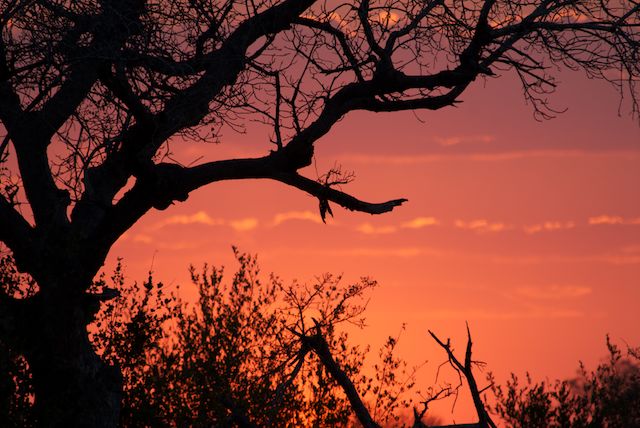
There is news on the photographic equipment market. Canon announced the new entry-level photo camera Rebel T5i and the tiny new Rebel SL1 DSLR. Read a detailed review of the T5i and the 18-55 mm kit lens by PetaPixel here. The Canon Rebel T5i can be a nice entry-level camera suitable for photographic safaris. Maybe a basic one or two hour photography course would do good to learn about the camera features and to get started operating it, to make sure its right from the start fun!
Fujifilm’s XP200 and S8400W are under review by PetaPixel as well. Read the complete reviews here and learn about their ruggedness and zoom. The XP lets you conquer any outdoor adventure and the S8400W is ideal when you shoot usually from a great distance.
For all who are phone-photo-snapping enthusiasts there is the new Digital Native App, that lets you shoot raw images with your iPhone. They claim to be the first to do that and the results look great. Have a look here.
And last but not least there is a comparing sensor review by DxOMark of the Leica M Typ 240 with Sony, Canon and Nikon. The Leica is not doing so well, but Leica lovers say that the sensor is already great for a digital Leica. See yourself here.
Have fun!
Ute Sonnenberg for www.rohoyachui.com
On Photo Safari: The Beanbag
09/02/13 09:17

The beanbag is an item made of fabric, looking like a small pillowcase, and is filled with beans, at least it was.
Nowadays beanbags can be filled with rice or lighter synthetic fillings and can have several shapes. There are beanbags that stay nicely on the sill of car windows on metal bars in safari vehicles or on the knee of the photographer. They are multifunctional and extremely helpful on photo safari.
We photographers are not able to hold our camera (with or without zoom lens) steady enough to create shake-less images. We need help. For night photography it has to be the tripod, but on photographic safaris the tripod is not very practical. The beanbag is much better. You can put it everywhere, it keeps you completely flexible and mobile and the images will be sharp. Just rest the camera lens on the beanbag and shoot away. Well, we seem to like to have control about our camera and it is always an item during the photography courses that it is difficult for us to let go and trust the beanbag, but we can. The beanbag is doing the job just great. Try it. It works perfectly.
Beanbags can be bought in all sizes and shapes. They are also easy do be made at home from a small pillowcase or a piece of clothe.
Happy beanbagging!
Ute Sonnenberg for www.rohoyachui.com
Photography: Camera Gear's Worth Life
06/02/13 08:28

What are you? An early adapter or rather waiting and see what happens? It is easy to be carried away on the hype over a new camera model or fantastic new gadgets of camera gear. Photography offers so many opportunities to play and one just wants to have the thing everybody is raving about. But does that make sense? Or rather doesn’t that hurt your wallet?
Have a look on what Roger Cicala has put into a graph about the worth of camera gear during its lifetime:
“For several years now, my occupation has been to basically read everything written about new equipment. In order to help everyone save time, and to save the Internet millions of electrons, I have developed a concise method to summarize all such discussions for all newly introduced imaging equipment.
I modestly call this Roger’s Law of New Product Introduction and have summarized it in the graph above. You will notice there are two possible paths a new product may follow. To date, these two paths accurately describe every introduced product. It is possible, depending upon which forums you visit, that a product follows both paths simultaneously – for example a new Canon camera will often follow path A on a Canon board, while following path B on a Nikon board. I suggest we refer to this as The Fanboy Uncertainty Principle.” (via PetaPixel)
So, maybe next time something exciting new comes out we wait a bit. It will give a better idea what the new camera can do and will be friendlier for our wallet. And if you are desperate to take it with you to the next photography course or on photographic safari, check if you can rent one and decide later.
Happy snapping!
Ute Sonnenberg for www.rohoyachui.com
On Photo Safari: Tripod vs. Monopod
02/02/13 08:52

Choosing the right equipment when going on photo safari can be difficult, especially when one has several cameras, lenses and accessories. First it depends on the mode of travel during the photographic safari. Travel by road gives usually no limits regarding the luggage and enough space to bring what you have. Flying is different. The small safari aircrafts have strict baggage allowances, usually 15 kg including hand luggage and photo equipment. Well, a camera body and a zoom lens are easily already 5 kg.
When it comes to accessories photographers are often doubtful, if they should bring a tripod or not. A tripod is nice when you want to do low light photography and night shots, but it needs space. On the safari vehicle is little space to set up your tripod and the tripod will constantly be in the way. And you cannot get out of the vehicle to set it up when photographing animals. It is actually not a good idea to bring one. You better bring a monopod. A monopod is lighter, easier to carry, needs less to no space and can help when wielding a big lens. It is not ideal when wanting to do night shots, because you are still holing it yourself, but if you are not keen on night shots, rather bring a monopod than a tripod.
Happy adventurous snapping!
Ute Sonnenberg for www.rohoyachui.com
On Photo Safari: Auto Display
26/01/13 19:47

Have there ever been moments that you were annoyed by the display of your camera, because you couldn’t see anything, especially when it’ sunny?
After photographing we like to look at the display of the camera to see what we did. Well, we know from our photography courses that the display is not the best quality to see the image, but still it should give a good impression of the result.
On one of the photographic safaris one of the guests had a Nikon D800E and he was very angry that he couldn’t see what he did, because the display looked just useless. After playing around in the menu we found that the camera was not to blame, it had an Auto Display feature, meaning that it adjusts the brightness of the screen to the light situation automatically. It turned out that this feature is very useful and works perfectly. The Auto Display feature turned an angry photographer into a very happy photographer.
Check first what your camera can do for you before you get angry at it!
Ute Sonnenberg for www.rohoyachui.com
eBook: How to's Wildlife Photography
13/01/13 23:39
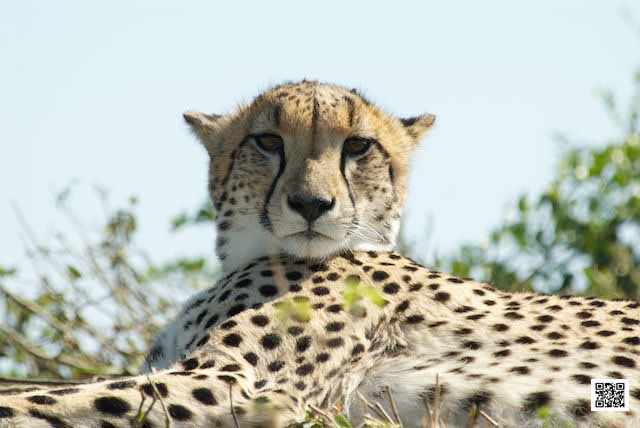
Throughout this blog, posts are scattered with wildlife photography subjects, yet not in a very handy way for the reader to pick them together to read easily.
For those who would like to have them all easy to read in one place, here is the ebook How to’s Wildlife Photography with a selection of blog posts on the subject.
View and download the ebook here.
Happy reading.
Ute Sonnenberg for www.rohoyachui.com
Paperwork Help to Sell Your Images
18/12/12 17:03
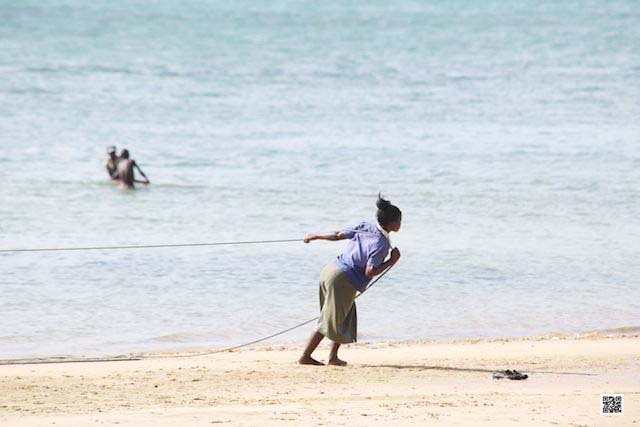
Have you ever been in a situation that you wanted to sell an image, but were unsure if you could, because there were people in it and houses? If you had liked to sell it to Getty Images, they would have told you immediately that you would need release forms to do so. A release form for each person, also miners and for each house would be needed.
Do you have release forms right at your disposal whenever you walk the streets? Probably not and even finding out where to get them can be a mission. At least it could be a mission, but there is help. Getty Images itself provides release forms to be used by photographer who want to submit images to them. And there is also Docracy, a website that provides all relevant forms for photographers, put together by professional photographers in the United States. Even contracts when you want to work with galleries and other really important forms are available on their website to make your life easier and safe with regards to your rights and a proper payment.
You might want to consult an attorney anyway, but the forms make you already wiser for the conversation with the legal professionals.
And now the probably most difficult part of having the forms with you whenever you are out to snap away. You will really not find that person ever again you just snapped at the park, just let the person sign the form and you are safe when selling the image.
Think practical and make it easy for yourself.
Happy snapping and selling!
Ute Sonnenberg for www.rohoyachui.com
Think Twice about the Megapixel You Want
13/12/12 19:03
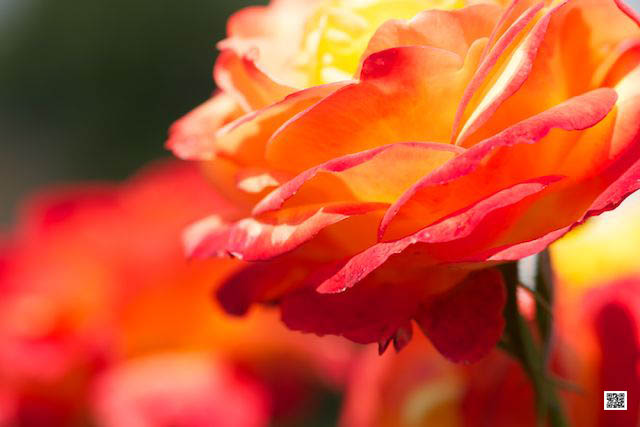
It was announced that Canon would come with a close to 50 Megapixel camera in October, but nothing happened. Yet the rumors are persistent that this “monster” will come and Sony will follow with their own high megapixel camera.
As questioned earlier, do we need or want that? The files are extremely big and the camera is getting slow and so does the upload to your computer.
Adobe guru Scott Kelby found out for himself when he wanted to upload 1,000 raw image files to an external hard drive. He had not considered the file size and the disk space was not enough to upload the 47 GB the 1,000 images were, shot with the Nikon D800. Just for the idea of comparing, 1,000 raw file images shot with the Nikon D3s are 15.5 GB and 1,000 jpeg images shot with the Nikon D700 are 6.5 GB.
Do we really want that?
Ute Sonnenberg for www.rohoyachui.com
information source: PetaPixel
What to Think Of When Photographing from a Plane or Helicopter
27/11/12 17:15

Besides photographing from a hot air balloon, photographing from a plane or helicopter is probably the most exciting way of capturing the beauty of Africa. To make your photographic bird view adventure a success, think of the following simple tips when going air born.
Make sure that you are not shooting through a window! There are helicopters without doors and for the rest with lots of glass for the perfect view. They are the perfect match for your bird view photography. If you are choosing for example a Cesna, make sure you can get the door on your side removed for the flight. Usually sky diving planes have the door already removed and otherwise ask the pilot, if he/she can arrange that the door gets removed for the flight.
If you can, choose a helicopter. Helicopters are steadier in the air for photography. A plane can be bumpier depending on the weather. Helicopters are also more flexible and can stand still for you, if needed.
Take off or secure everything you could loose easily during the flight like earrings, shawls and other loose or possibly getting loose things. Try not to wear glasses/sunglasses while photographing. It is disturbing your photography and you might loose them. Secure your camera, but do NOT hang the strap around your neck. The gravity will pull your neck down, you will get tired very quickly and it might slide over your head and then the camera is gone. Have the strap diagonal over your shoulder like you would do with a shoulder bag (the way it doesn’t slide from the shoulder).
Don’t be afraid. Although there is no door, you won’t fall out, unless you want it. But don’t do it when you are afraid of height, you will not be able to control the fear in that situation and you might fall. It is all more a question of psychology, imagination and having seen to many Hollywood movies. Secure yourself on your seat and relax.
Now shoot away!
Ute Sonnenberg for www.rohoyachui.com
Make a Photo Book & Photo Magazine with Your iPhone
09/11/12 17:18

Not that long ago I was wondering when there would be online tools to make eBooks with easy templates and sharable immediately in social media. I haven’t found yet something to work from the computer, but there are two cute iPhone apps that get very close to the idea.
Mixbook has a new app called Mosaic that allows you to make a photo book with your iPhone. You choose 20 images from your photo library and the app creates a virtual photo book from the selection. Then you choose a background color and shuffle the cover images and that’s it. Mixbook gets your photo book printed and delivered to where you want it.
The other app is Beamr. It allows you to create a photo magazine from your iPhone. Just select images from your photo library, choose a cover, the app will add some text (you can change the cover text) and create your magazine.
Probably the nicest part is that you can share your magazine immediately and the recipients can save the images in full resolution. This app has still room for improvement, like the images cannot be arranged in any way and there is only one cover, but it’s already great to make this little cute magazine.
Check it out, its quick and easy done and its fun.
Ute Sonnenberg for www.rohoyachui.com
Review Time: Photokina's New Cameras
02/10/12 16:54

All big camera brands announced their new models at the Photokina and now the first reviews are available.
The most interesting reviews might be the ones on the full-frame entry level Nikon D600 and Canon D6, just good to have them to compare the two “similar” new camera models of the two big brands. Check out PetaPixel’s Hands on with the Nikon D600 and Hands on with the Canon 6D.
Of a different league is the Leica M. Also here a Hands on with the Leica M by PetaPixel to get to know her better before making a decision to buy one.
Also available so far the PetaPixel hands on review of the Fujifilm X-E1, the Fujifilm XF1 and the Samsung Galaxy Camera.
Surely there will be more reviews coming during the following weeks and if you think about getting one of the new camera models, try to test them at your camera store before buying one. The camera needs to suit you and no review can tell how the camera will feel for you. Only you know, if a camera works for you and what you want to do in photography.
The new camera models are definitely an inspiration and make one wondering how cameras will be in the future. Until future arrives lets enjoy what the present offers.
Happy testing!
Ute Sonnenberg for www.rohoyachui.com
Photokina: Camera Giants & Their News
24/09/12 11:06

It is over for this year. The Photokina has closed her doors and photography lovers are still breathless from al the camera news that came over them, maybe secretly thinking already of buying one of the new models.
Probably the most bespoke new cameras are the Nikon D600 and the Canon 6D. Both are entry level DSLRs with a full-frame sensor and it makes complete sense to give them almost the same name. If you doubt which one to prefer, have a look at the sensor test from DxOMark and you will see that the result is not surprising.
While the Nikon D600 and the Canon 6D still have a reasonable price, other brands like Leica and Hasselblad introduced more pricy new camera models. They are the Leica M and the Hasselblad Lunar. Well they are great cameras, with an even great price.
For a nice overview and to compare the new camera models from the Photokina, have a look at the WEX page. More detailed tests will only be executed now, so more information on the new cameras will be available soon.
Fortunately Christmas is coming soon and Father Christmas might make one or the other camera dream come true.
Happy snapping!
Ute Sonnenberg for www.rohoyachui.com
Photokina & Photo Safaris: A Love Affair?
19/09/12 09:25
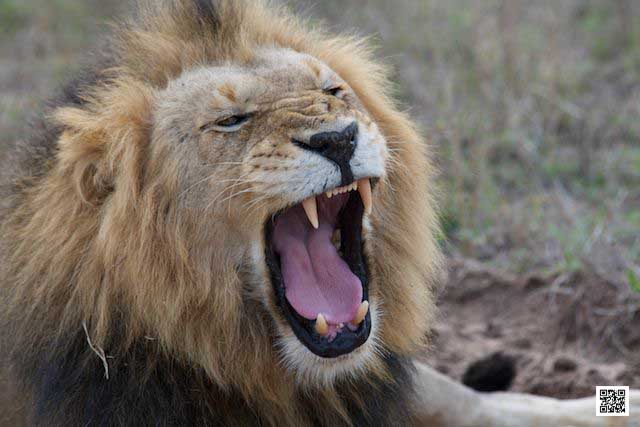
The Photokina has started and millions of people all over the world are waiting for the technical photography news to flood into their inboxes. Will Canon come with this 46 Megapixel camera? How will be that Nikon D600 entry-level full-frame camera? There will be new “Porsche” and “Mercedes” and “city cars” for the photographer to play with. But will they be of any meaning for the success of a photo safari?
Technical photography gear is important for photo safaris. You will need a camera with a reasonable speed in order to photograph the fast moving objects and you will need a good zoom lens to get them in the picture, recognizable as a lion and not only as an undefined dot. But do you need 36 megapixels? Most likely not. As fantastic as the Nikon D800 is, it is not the most suitable camera for a photo safari. Shooting these big files costs speed and memory card space and if you have a proper zoom lens, you don’t need to crop afterwards.
Do you need all the accessories, tripods, gadgets, bags and straps? Keep it simple. Don’t get lost in technology. On a photo safari you are in the most beautiful and demanding environment for photography and not in a studio. You got to connect with this environment, understand it and translate it into photographs. Too much technical gear will only be a burden. Keep that in mind when packing and for the rest enjoy the inspiring news from the Photokina.
Tweet.
Ute Sonnenberg for www.rohoyachui.com
How to make an Infographic
11/09/12 10:37
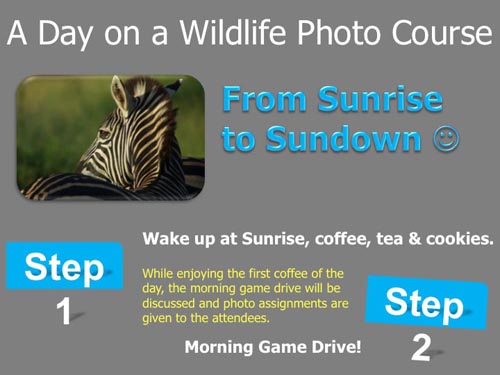
In case you are wondering how people make these awesome infographics you can see on Pinterest and other social media, here are a template, an example and a guide how to do them.

The template is from Hubspot and available here. And a step by step Snapguide can help you to get it easily done.
Enjoy making your own awesome infographics and get your message out.
Ute Sonnenberg for www.rohoyachui.com
How to Re-Imagine Photographic Opportunities
06/09/12 11:45

Have you ever had moments that you felt the urge to photograph, but had the feeling that there is nothing around? Like days without sun, again the same garden, not the right equipment to capture that or thoughts like ‘this is anyway not going to be good”. In these moments we might do a lot of imagination, but not the kind of imagination that stimulates us to see and shoot. We might imagine only the downside of everything.
How can we change that? Well, simple enough through photography. We just need to get through this wall of negative imagination and it doesn’t need to be an effort. Just take your cell phone, most likely you don’t even have to move for that, because it’s always with you and start shooting away. Maybe choose one of your photo apps and click and see what comes out of it when photographing your TV. Without even noticing you will be drawn into your photography and the silliest subject will become highly interesting and arty. You just started seeing again and your imagination will be stimulated to artistic heights.
Try it, also when being in the office
Ute Sonnenberg for www.rohoyachui.com
Copyright & Pricing in Photography
03/09/12 10:40
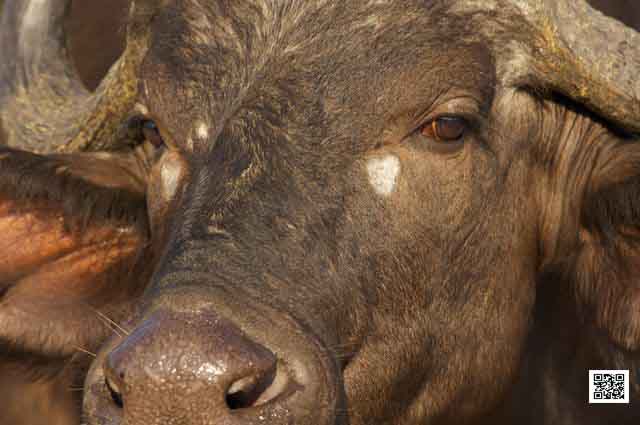
The question of copyright and prices in photography can be a very confusing matter. What are the laws, what rights do I have in the digital era, how can I deal with infringements, who can help and what can I charge for my photography? There are many answers from different sources and there are a few professional sites that really help.
Have a look at the website from EPUK, the platform of the Editorial Photographers United Kingdom & Ireland. Below is a link to their write up on copyright, from the beginnings until today.
EPUK Editorial Photographers United Kingdom & Ireland:
Copyright in the 21st Century:
Let’s start with a brief history. Copyright began about 300 years ago with the Statute of Anne. This law for the first time turned something made of thought into an object that could be owned and traded and which could be regulated by the government and courts. Read more
On the pricing FotoQuote is the tool professional photographers consult for their pricing. It allows easy Rights Managed calculations for all regions in the world and is also used in the Photoshelter galleries.
Here the link to Foto Quote:
fotoQuote Pro is a photo price guide that provides pricing and negotiation information for stock and assignment photography.
Read through it and find what suits you and your photography purposes best. These tools can be very helpful when suddenly asked for an assignment
Ute Sonnenberg for www.rohoyachui.com
Photokina rumors: The Canon 46MP monster
30/08/12 09:43

It seems like the megapixel monster was unleashed and Nikon and Canon are chasing Hasselblad. For a long time Hasselblad was the one with the monstrous amount of megapixel cameras, but recently Nikon caught up with them with their D800 and will Canon eventually race past both?
There are rumors that Canon will launch a DSLR with 46 megapixel at the Photokina in Cologne in September. But will it or will it rather stick to 22 megapixel? One needs the right lenses in order to get the best out of such a megapixel monster. Users of Nikon’s D800 are already carful with yielding this amazing camera.
We will know soon. Do we need such a thing?
Ute Sonnenberg for www.rohoyachui.com
The Only Limitation for Your Photography is You
29/08/12 17:19

What do you think about your own photography? When you show your images to others, do you immediately start commenting them why you did this and this and excusing something you think could have done better?
Our photography shows always something of us and it is for ourselves like looking into a mirror when looking at our images. And if we do not like certain sides of ourselves, we might start limiting ourselves in our freedom of photographing what ever comes up or we wish to retouch our photographs in order to cover the flaws we think we have. But like with thinking our nose is skew and everybody will notice, we might be the only one seeing a flaw in the photograph. And what is actually a flaw? Nobody notices a skew nose in a fascinating personality and a blur photo can be the most fascinating image, magnetizing a room.
When you love a photo, it is a great photo and your heart is always right. Listen to it and you will enjoy the freedom photography has to offer.
Ute Sonnenberg for www.rohoyachui.com
Would you like to do a Webinar?
22/08/12 17:15

Photography is an inspiring medium and we all seem to love it and do it almost every day. There seems always to be some kind of discussion going on around photography, questions asked and opinions shared. How would it be to do that during a webinar?
If there is interest in doing a photography webinar, just leave a message to this blog post.
And if yes, what would you like the webinar to be about? What kind of photography subject would you like to hear and talk about?
You are welcome to share your thoughts and to inspire. Thank you!
Ute Sonnenberg for www.rohoyachui.com
How to Photograph Leopards
25/07/12 19:58
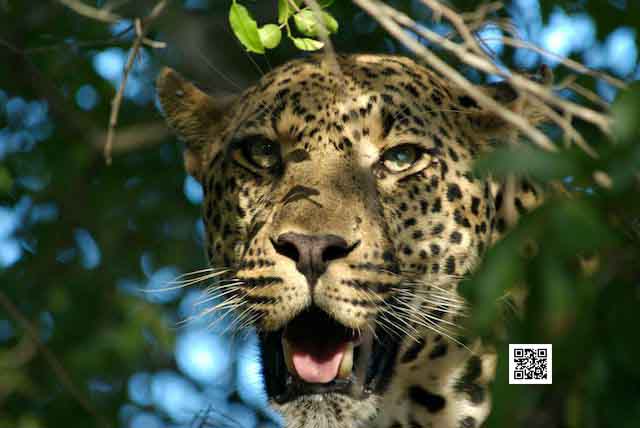
It might sound far-fetched, but Quantum Physics is the starting point to understand and photograph leopards. Everything is made of the same energy and everything is connected to everything else is an essential lesson from Quantum Physics, that applies to us as it applies to leopards, a coffee mug and the car we are driving in. Because we are all made of the same energy, we are also all connected and communicate on the energy level all the time, mostly without being conscious about that, although we use phrases like “we are on the same wavelength” with somebody or not. So somehow we know that we are communicating on frequencies like radio channels and some people can receive the signals and some don’t or receive only distorted messages. That means that the energy we are made of vibrates or moves in different frequencies, higher or lower frequencies, faster or slower. We might experience situations where we immediately have a good “click” with somebody. Most likely this persons communicates on energy level on the same frequency as we do. When we experience a situation that we find it difficult to be in the presence of a certain person for too long, because we start to feel tensed and restless, like pressure is building up, we might have an encounter with somebody of a high frequency energy and our energy frequency finds it hard to adjust to the same level. In the other direction to a lower frequency the adjustment is easier and mostly not experienced as demanding or unpleasant. But what does all that have to do with photography and especially leopard photography?
An easy answer could be, wait until you look one into the eyes, but it is helpful to know what happens when you are in the lucky position to be near a leopard and able to spend time with the animal. The difference in photographing wildlife in general and leopards in particular is the very high frequency energy this incredible cat has. Being conscious about that helps a lot when photographing them.
Imagine you are on a game drive and suddenly there is the leopard you were looking for already for days, right in front of the vehicle on a termite mount. Now just shoot away. Don’t think. Let the adrenaline from the excitement out and also take the pictures you can get, before the leopard possibly disappears. This moment might take a minute or two. You will feel when the excitement has settled and you will sit more relaxed in the vehicle. First thoughts of how to photograph the leopard properly will pop up. The next thing might be a feeling of impatience and negative thoughts about the light, the not doing anything animal, chaos with the camera settings, maybe a bit cursing, annoyance and eventually anger why we are still here with this leopard, enough leopard. This is a very important moment. When you decide to leave the sighting, you will miss the chance to connect with the animal and to get the most beautiful photos. All the negative thoughts and the physical reactions of feeling uncomfortable are caused by the difference in energy vibration/frequency. The leopard as a high frequency animal is just sitting there and doing nothing, only sending out on his/her frequency and your energy is trying to tune in to the leopards energy frequency. This tuning process causes the uncomfortable feeling. It will disappear as soon as you are tuned in and from there its as easy as what to photograph this amazing animal and to get the most beautiful leopard images.
Be patient. Stay with the animal and give yourself the time to tune in. As soon as you are tuned in on the leopards frequency the whole “energy situation” on the sighting will calm down and all present parties will connect on the same level. The leopard will start doing his/her thing and the most incredible photo opportunities will occur.
Try it at home with your cat and get trained for the big cat!
Ute Sonnenberg for www.rohoyachui.com
Recipe for a Soul Feeding Photo Adventure
24/07/12 22:35

Ingredients
1 or more camera(s)
1 or more lens(es)
1 or more fully charged battery(ies)
1 or more memory cards/films
1 laptop or other backup medium
1 or more power adapter(s)
1 card reader or cable for image upload
1 or more places to stay
1 or more reliable guide(s) depending on destination
1 or more camera bag(s)/backpack
comfortable clothes for all possible weather conditions
food & beverages
well planned logistics and accommodations
visas and permits if necessary
maps/GPS for navigation
well considered security preparations and backup plan
plan B if plan A cannot go through
emergency plan
passion, inspiration & a high spirit
Method
Listen to your heart when deciding on the destination of your photo adventure; the park in your town, your grandmother’s garden, the beaches of Hawaii or the African savanna, no matter how close to home or how far away, follow the choice of the heart.
Take all technical ingredients, check them, clean them and decide on the cameras and lenses depending on the destination and subject. When you made your choice put the technical equipment in the camera bag or backpack.
Add the environmental ingredients. Make sure that everything is organized and set in a way that you are safe and comfortable.
Finish with putting the cherry on the cake; the ingredients passion, inspiration and high spirit.
Enjoy your soul feeding photo adventure.
Ute Sonnenberg for www.rohoyachui.com
How to Organize Your Loads of Photo Safari Images
23/07/12 19:15

Digital Photography is a great thing. It makes us shoot away, not thinking and worrying too much, just snapping and enjoying this incredible hobby or profession. But there is a little downside. How to handle all these images?
Many of us are struggling with this part of photography and when you’ve got down the road for a while with now good idea how to do organize your images, it becomes more and more frightening to start doing it properly and organizing the archive.
Here some tips that might help getting some structure into the huge amount of images we are taking and taking away the fear of doing it.
Reflect & Anticipate.
Before you even start taking images think of how you want to find them back and/or think of how you usually find things back. Everybody has got his/her own way of thinking and remembering, the way we go through the drawers of our brain for all sorts of things. Some have a photographic memory others are good with numbers. There are plenty of different ways of thinking. Reflect and identify your way of thinking and remembering. You might like to store the images chronologically by making folders like “day 1 of photo safari”, “day 2 of photo safari” or you rather like to make folders per subject like “lion”, “leopard”, “cheetah” and “landscape”. Only you know what suits you best and fits your thinking patterns. Reflect on that and make an important first step to organize your images.
Then anticipate. When you are for example very lucky and on a game drive where you see five different leopards, you want to be able to know afterwards which images where of which leopard. Take an image of the sky or another landmark that does not fit into the sequence of the leopard shots before you start photographing the next leopard. It will tell you later that this was the other leopard, leopard number two and you can put him in his dedicated folder. It works also very well when photographing for example dog shows or horse sports events. It will save you lots of time and nerves when going later through your images to find the one your friend is asking for.
Structure the image upload to your computer.
When the moment comes to upload your images to your computer you know already how you want the images to be organized, because you did the reflection and the anticipation beforehand. Now comes again a bit anticipation. Before you start uploading your photos, make the image folders on the computer first. That will prevent the leopard images going automatically into the big folder of all holiday photos, but directly to where you want them. When you have a folder “photo safari”, make a subfolder “leopards day 1” or only a subfolder “day 1”, whatever suits you best to have the structure to find them back later set.
Upload and backup.
Your images are on your computer, nicely organized and you can find everything easily when you need it. Now comes the next and final step, the backup. The general rule is that you should have 2 backups and one backup off site. The backups are usually done on an external hard drive, to prevent image loss due to computer problems or theft. Create the same folder structure you use on your computer on the backup hard disks, because your thinking stays the same and you want to find things back. The off site backup can also be a hard drive with your images that you store in a safety deposit box at your local bank. An alternative is to store your images off site is the cloud, but when you shoot big files that will only apply to your very best images. Otherwise it will take forever to load them to the cloud and take a lot of space.
Now you are all set and organized. No worries anymore and free brain space to think about nice photography opportunities instead of how to organize and find your photos again.
Easy software for organizing images is Aperture. I don’t know how it works with Lightroom, but its also used by many people.
Enjoy a photo database without worries and keep snapping away!
Ute Sonnenberg for www.rohoyachui.com